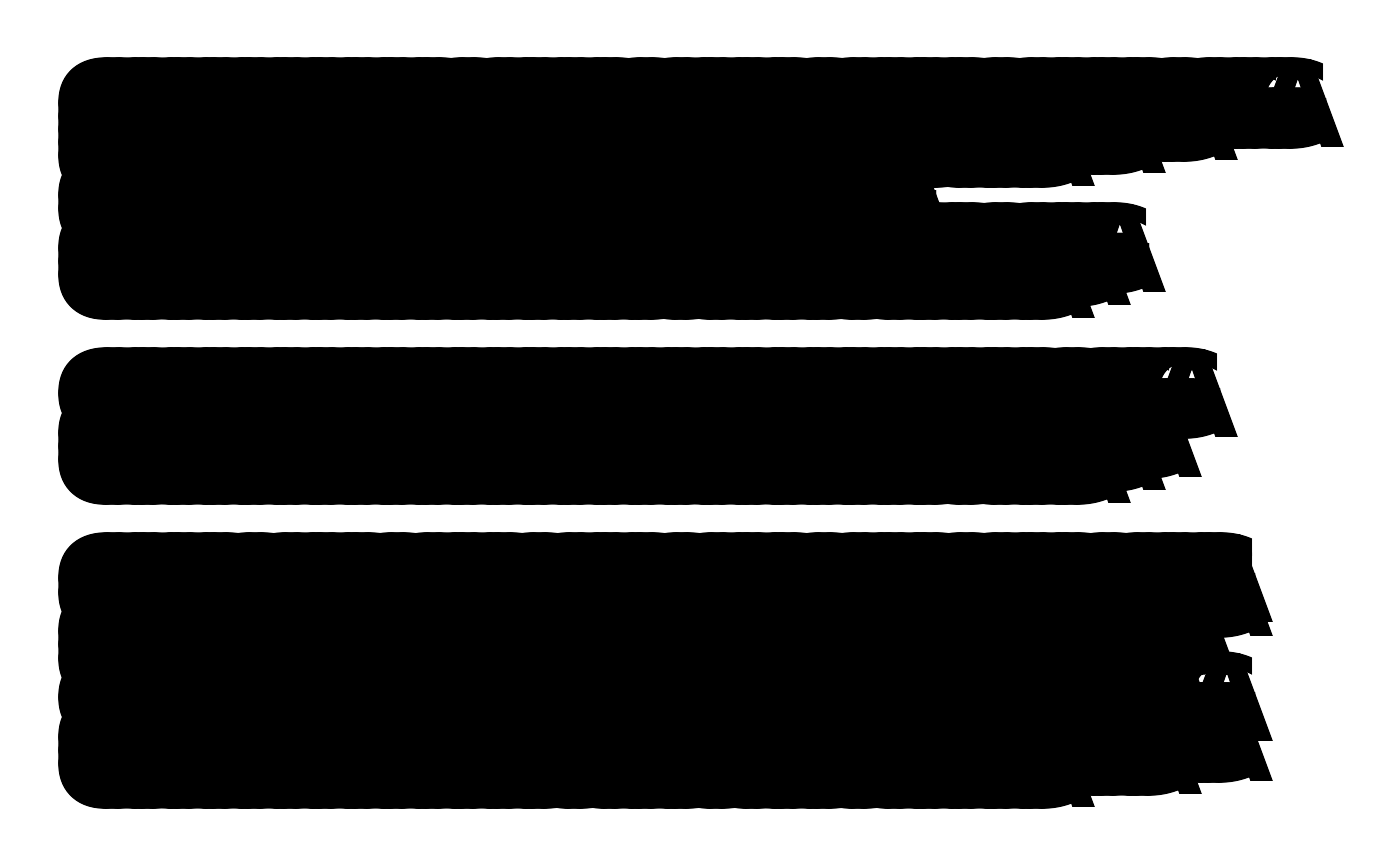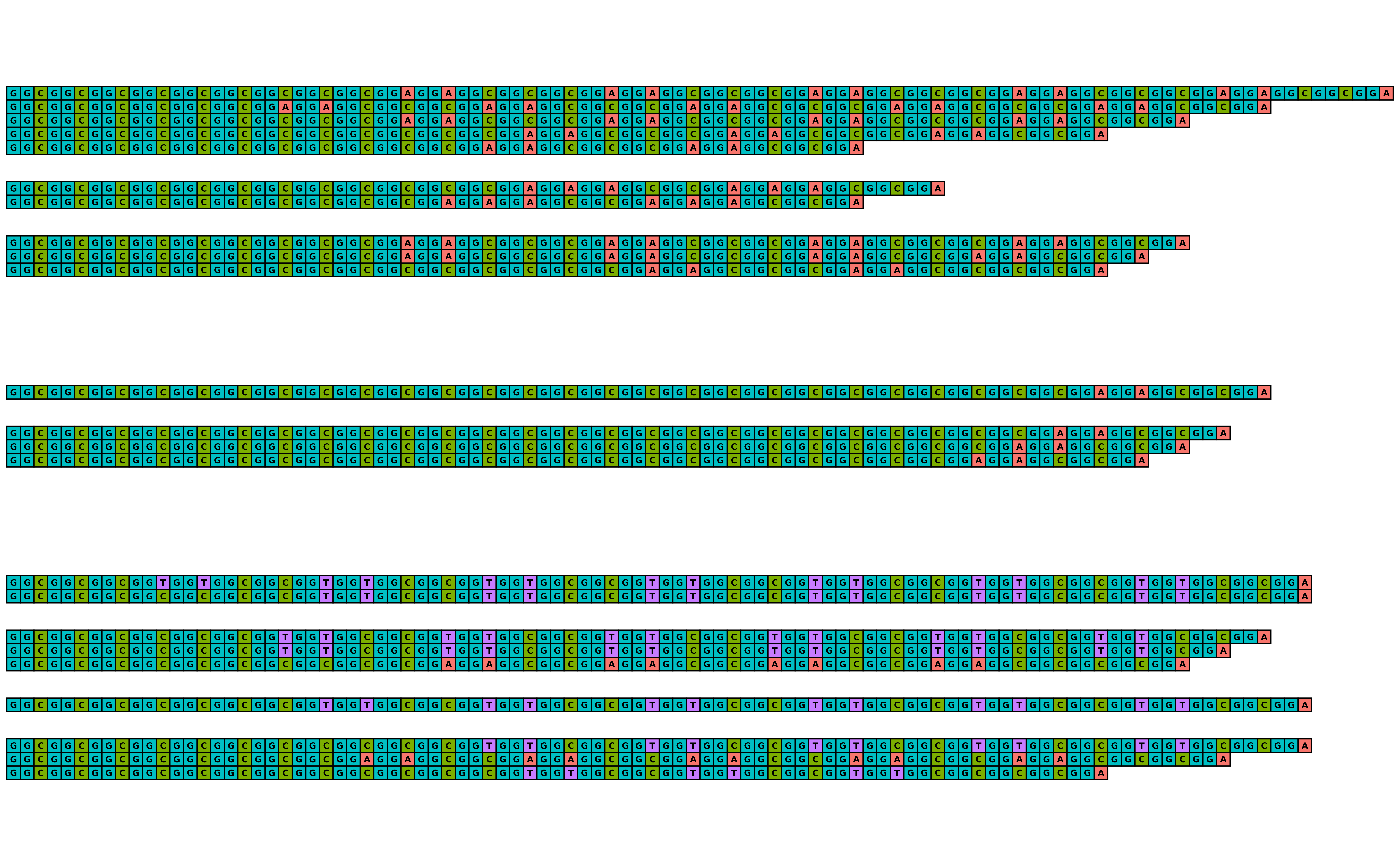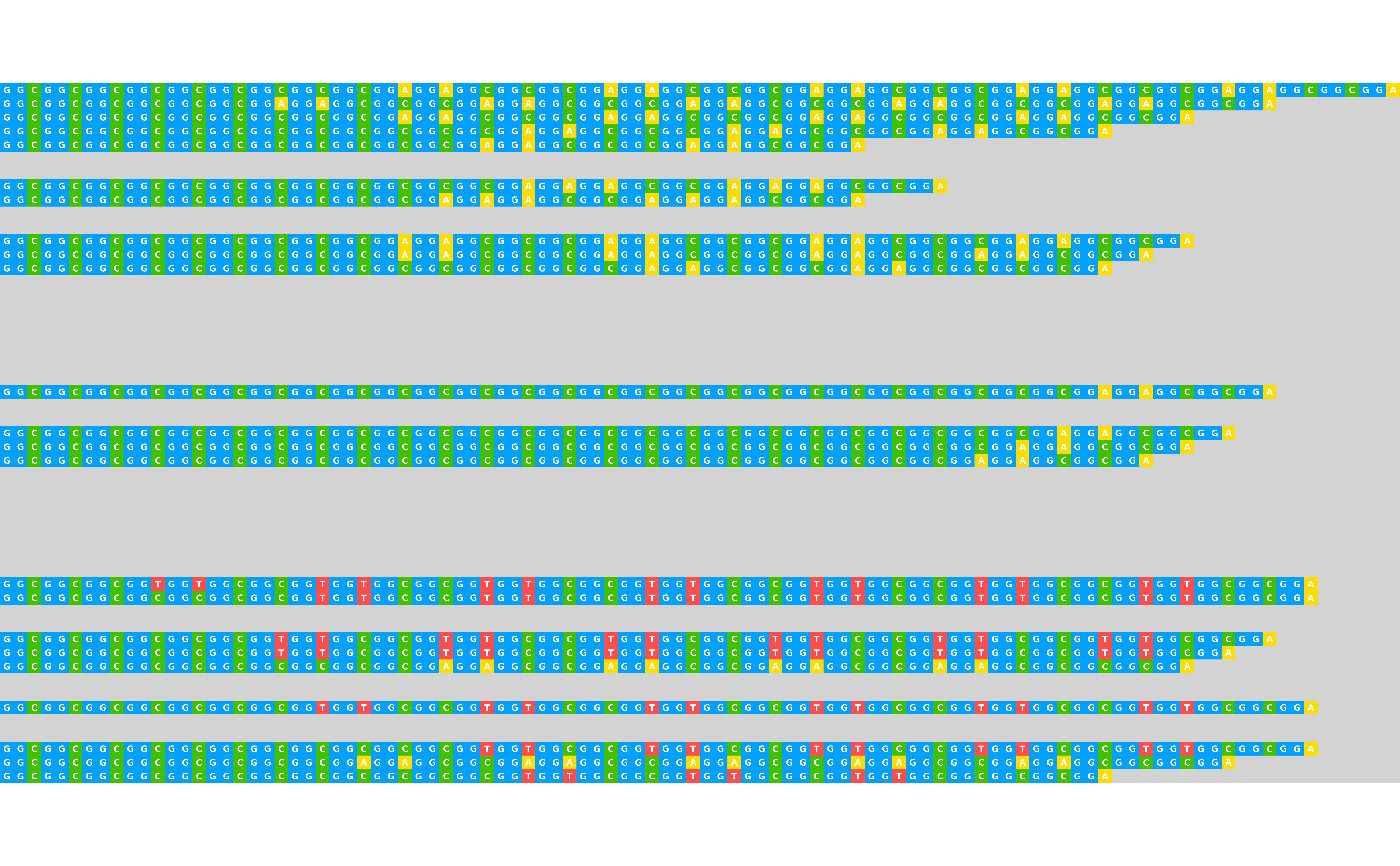This function takes a vector of DNA/RNA sequences (each sequence can be
any length and they can be different lengths), and plots each sequence
as base-coloured squares along a single line. Setting filename allows direct
export of a png image with the correct dimensions to make every base a perfect
square. Empty strings ("") within the vector can be utilised as blank spacing
lines. Colours and pixels per square when exported are configurable.
Usage
visualise_many_sequences(
sequences_vector,
sequence_colours = sequence_colour_palettes$ggplot_style,
background_colour = "white",
margin = 0.5,
sequence_text_colour = "black",
sequence_text_size = 16,
outline_colour = "black",
outline_linewidth = 3,
outline_join = "mitre",
return = TRUE,
filename = NA,
render_device = ragg::agg_png,
pixels_per_base = 100
)Arguments
- sequences_vector
character vector. The sequences to visualise, often created from a dataframe viaextract_and_sort_sequences(). E.g.c("GGCGGC", "", "AGCTAGCTA").- sequence_colours
character vector, length 4. A vector indicating which colours should be used for each base. In order:c(A_colour, C_colour, G_colour, T/U_colour).
Defaults to red, green, blue, purple in the default shades produced by ggplot with 4 colours, i.e.c("#F8766D", "#7CAE00", "#00BFC4", "#C77CFF"), accessed viasequence_colour_palettes$ggplot_style.- background_colour
character. The colour of the background. Defaults to white.- margin
numeric. The size of the margin relative to the size of each base square. Defaults to0.5(half the side length of each base square).
Very small margins (\(\le\)0.25) may cause thick outlines to be cut off at the edges of the plot. Recommended to either use a wider margin or a smalleroutline_linewidth.- sequence_text_colour
character. The colour of the text within the bases (e.g. colour of "A" letter within boxes representing adenosine bases). Defaults to black.- sequence_text_size
numeric. The size of the text within the bases (e.g. size of "A" letter within boxes representing adenosine bases). Defaults to16. Set to0to hide sequence text (show box colours only).- outline_colour
character. The colour of the box outlines. Defaults to black.- outline_linewidth
numeric. The linewidth of the box outlines. Defaults to3. Set to0to disable box outlines.- outline_join
character. One of"mitre","round", or"bevel"specifying how outlines should be joined at the corners of boxes. Defaults to"mitre". It would be unusual to need to change this.- return
logical. Boolean specifying whether this function should return the ggplot object, otherwise it will returninvisible(NULL). Defaults toTRUE.- filename
character. Filename to which output should be saved. If set toNA(default), no file will be saved. Recommended to end with".png", but can change if render device is changed.- render_device
function/character. Device to use when rendering. Seeggplot2::ggsave()documentation for options. Defaults toragg::agg_png. Can be set toNULLto infer from file extension, but results may vary between systems.- pixels_per_base
integer. How large each box should be in pixels, if file output is turned on via settingfilename. Corresponds to dpi of the exported image.
If text is shown (i.e.sequence_text_sizeis not 0), needs to be fairly large otherwise text is blurry. Defaults to100.
Value
A ggplot object containing the full visualisation, or invisible(NULL) if return = FALSE. It is often more useful to use filename = "myfilename.png", because then the visualisation is exported at the correct aspect ratio.
Examples
# \donttest{
## Create sequences vector
sequences <- extract_and_sort_sequences(example_many_sequences)
## Visualise example_many_sequences with all defaults
## This looks ugly because it isn't at the right scale/aspect ratio
visualise_many_sequences(sequences)
 ## Export with all defaults rather than returning
visualise_many_sequences(
sequences,
filename = "example_vms_01.png",
return = FALSE
)
## View exported image
image <- png::readPNG("example_vms_01.png")
unlink("example_vms_01.png")
grid::grid.newpage()
grid::grid.raster(image)
## Export with all defaults rather than returning
visualise_many_sequences(
sequences,
filename = "example_vms_01.png",
return = FALSE
)
## View exported image
image <- png::readPNG("example_vms_01.png")
unlink("example_vms_01.png")
grid::grid.newpage()
grid::grid.raster(image)
 ## Export while customising appearance
visualise_many_sequences(
sequences,
filename = "example_vms_02.png",
return = FALSE,
sequence_colours = sequence_colour_palettes$bright_pale,
sequence_text_colour = "white",
background_colour = "lightgrey",
outline_linewidth = 0,
margin = 0
)
## View exported image
image <- png::readPNG("example_vms_02.png")
unlink("example_vms_02.png")
grid::grid.newpage()
grid::grid.raster(image)
## Export while customising appearance
visualise_many_sequences(
sequences,
filename = "example_vms_02.png",
return = FALSE,
sequence_colours = sequence_colour_palettes$bright_pale,
sequence_text_colour = "white",
background_colour = "lightgrey",
outline_linewidth = 0,
margin = 0
)
## View exported image
image <- png::readPNG("example_vms_02.png")
unlink("example_vms_02.png")
grid::grid.newpage()
grid::grid.raster(image)
 # }
# }
